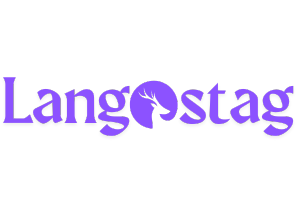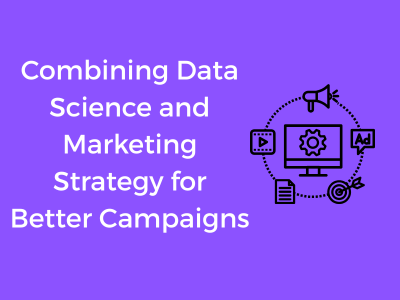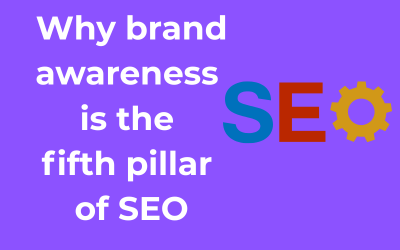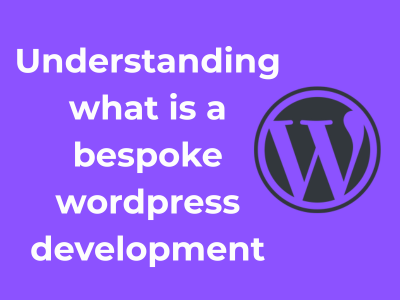Marketing and storytelling have always been like peanut butter and jelly—a classic pairing. But as the digital age blossomed, a new ingredient emerged in our marketing toolkit: data science. If marketing was once about spinning tales that stir emotions, today it’s also about weaving those narratives on a foundation of robust, data-driven insights. Sounds complicated? Let’s break it down together.
Why Numbers Matter in a Sea of Stories
Think about your favorite brand campaigns. Sure, they probably hooked you with some fantastic storytelling or an emotionally resonant theme—but behind the scenes was a flurry of algorithms, data points, and spreadsheets ensuring that the message hit you at just the right time, on just the right platform. This sweet spot—where creativity meets concrete numbers—is the intersection we’re exploring.
Data, when used wisely, doesn’t snuff out creativity. Far from it! It clears away the guesswork and allows marketers to concentrate on building stories audiences actually want. In essence, marketers now have a superpower: the ability to merge human intuition with the precision of analytical insights. And when done right, the results can be magical.
How Data Elevates Storytelling
Here’s the thing—marketing is about reaching people, not just demographics. Data science dives beneath the surface to uncover key patterns, like what truly resonates with your audience. Here’s where things get exciting! Let’s consider the following benefits:
- Personalization Amplified: Data can tell you more about your audience—their likes, dislikes, habits, and needs—which allows you to craft highly personalized messages. Say goodbye to generic campaigns!
- Timing is Everything: With data, you can determine the best time to reach someone. Whether it’s a product launch or a simple social media post, data ensures your message strikes when your audience is listening.
- Clarity through Metrics: What worked? What didn’t? By measuring metrics like click-through rates, bounce rates, and even sentiment analysis, data paints a clearer picture of campaign performance.
Tip: Even if data science seems intimidating, tools and platforms exist today that automate much of the heavy lifting. Invest in the right tools, and you’re already halfway there.
The Lingua Franca of Campaigns
When data meets storytelling, something fascinating happens: campaigns start to speak the “language” of their audience. By digging into data, you’re essentially becoming bilingual—fluent in both human psychology and cold, hard metrics. And when you blend this fluency into an engaging message, your audience feels seen and heard.
Picture this: you’re not just another brand yelling into the void; you’re a trusted friend who just gets your customers. And in an increasingly competitive market, this relatability can be your secret sauce.
Getting Started!
Curious about stepping into the thrilling world of data-driven marketing? Start small. Look at available customer data—like email engagement rates or social media activity—and ask yourself, “What behaviors are these numbers revealing?” From there, you can conceptualize campaigns that align both your message and your target audience’s needs.
Beyond Statistics: Human Behavior Painted Through Data Patterns
Let’s imagine data as tiny brushstrokes in a massive painting. While a single stroke doesn’t reveal much, step back and you’ll see something extraordinary—human behavior captured in vibrant detail. At LangStag, this is where the magic truly happens: interpreting the raw ingredients of data into actionable insights about what makes people tick. And trust me, it’s way more exciting than just crunching numbers!
Understanding the “Why” Behind the “What”
Think about every interaction a customer has online: clicking links, adding items to a cart, or even pausing on a specific page for a bit too long. Each action creates data, but numbers alone don’t tell us why someone acts the way they do. LangStag dives deeper, peeling away the layers to uncover motivations, preferences, and even emotional triggers. This isn’t a surface-level reading; we’re talking about decoding the stories behind the stats.
For instance, let’s say a spike in product sales occurs on Friday evenings. A quick conclusion might be that payday influences purchasing decisions. But when LangStag looks closer, we might realize it’s because shoppers are preparing for weekend plans—perhaps even drawn in by how they interact with party-themed ads earlier in the week. We don’t stop at “what happened.” We ask, “why does it matter?”
The Human Context in Data Patterns
Numbers are powerful, but without human context, they’re just noise. LangStag’s approach is about connecting data points in a way that mirrors real-world behavior. This includes factoring in emotions, cultural trends, and even seasonal behaviors to paint a clearer picture.
- Why did a family-focused ad do better in December compared to June? (Hint: holidays play a big role in decision-making!)
- How do customers react differently to “free shipping” versus “20% off”? Emotional value and perceived savings win every time.
- Is the timing of your campaign aligned with your target audience’s routines? A/B testing might highlight unexpected preferences.
Every pattern in data tells a story—and sometimes, it reveals hidden opportunities you didn’t even know existed!
The Role of Personas and Psychographics
To truly reach people, knowing generic demographic details (think age or location) isn’t enough. LangStag leans on psychographic insights—things like interests, values, and lifestyle choices. By aligning campaigns with these nuanced aspects, we create a meaningful connection. After all, the goal is deeper than just selling; it’s about building relationships.
For example, targeting “fitness enthusiasts” works much better when you zero in on whether they prioritize wellness for energy, mental clarity, or community engagement. These details help craft tailored messages that resonate deeply.
Why This Matters for Your Campaigns
Here’s the big takeaway: your audience isn’t just data—they’re human beings with unique journeys. By focusing on underlying patterns and motivations, LangStag ensures that every campaign speaks directly to these human truths. Sure, it’s backed by advanced data techniques, but what truly drives results is understanding what makes people click, buy, or share.
Real-Time Decisions: Machine Models Steering Campaigns
Think of your favorite navigation app—why do we love them? They give us real-time updates based on current traffic. Now picture applying that same idea to marketing campaigns. Cool, right? At LangStag, we’re all about leveraging machine models (basically, really smart algorithms!) to guide campaigns in real-time. Let’s break it down so it feels less “robot overlord” and more “friendly helping hand”.
What Exactly Are Machine Models in Marketing?
Machine models are essentially algorithms trained to learn from piles of data. They assess what’s working, what’s not, and then predict what’s likely to work even better—all at lightning speed. In marketing, these models analyze user behavior, engagement metrics, and performance data to steer campaigns toward success. The goal? To help businesses make data-driven decisions, not just gut-driven guesses.
Why Real-Time Insights Matter
Time is everything in the digital age. Trends erupt on social media overnight, and customer preferences can change faster than we can say “algorithm.” Machine models keep up with this chaos, allowing campaigns to pivot on a dime. Imagine running an ad, noticing in real-time that one headline resonates ten times more than another—and swapping it out instantly. Presto! You’re no longer bleeding ad dollars on a weaker option.
- Timing: Real-time adjustments mean you can hit your audience exactly when they’re most receptive.
- Personalization: Machine learning tracks user behavior, so content feels curated and timely for each individual.
- Cost Efficiency: No more wasted spend on marketing that doesn’t hit the mark. Instant optimizations mean better ROI.
How LangStag Uses Real-Time Decisions
At LangStag, we don’t just let machine learning run rampant. We blend it with a pulse-check on what makes people tick. Here’s how we use real-time models to power campaigns:
- Dynamic Audience Targeting: Instead of static audience lists, we use machine models to continuously refine who sees your campaign. For instance, your message might start with 10,000 people but narrow to the 5,000 individuals showing greater engagement.
- Content Tweaks That Count: Say one image or phrase outperforms another—our models pick up on that immediately. By automating tweaks, we keep ads fresh and constantly engaging.
- Ad Spend Optimization: If certain platforms (like Instagram Stories) yield stronger results than others (like LinkedIn), the system reallocates your budget automatically.
Here’s a Fun Example
Recently, we ran a campaign for a new athleisure brand. Using real-time machine learning, we noticed that product posts featuring bright colors were outperforming neutral tones. After tweaking the visuals, engagement skyrocketed—resulting in a 40% increase in click-through rates overnight. It wasn’t luck; the machines helped guide the way!
Our Advice for You
Not ready to dive into machine learning? Start small. Use analytics tools to measure campaign performance and experiment with simple tweaks—try A/B tests for subject lines, landing pages, or visuals. The more you incorporate data-backed changes, the more you’ll feel the magic of real-time marketing.
Predicting Trends: Staying Ahead in Strategy Designs
Imagine being able to know what your audience wants even before they ask for it—it sounds like a superpower, right? Well, in the world of data science and marketing, predicting trends is as close as we get to peeking into the future. LangStag has mastered the art of trend prediction, and it’s one of the reasons their campaign strategies are always two steps ahead. Let’s explore how and why this works.
The Importance of Trend Prediction
Why is predicting trends so critical in marketing, you ask? Because the world moves fast! Consumer interests shift, new technologies emerge, and cultural dynamics evolve. If your campaign strategy relies on outdated assumptions, you run the risk of being irrelevant. Predicting trends ensures marketers not only understand the current landscape but also anticipate what’s next. The result? You stay ahead of the competition while consistently resonating with your audience.
Harvesting the Right Data
Trend prediction starts with gathering the right data. LangStag doesn’t just look at what’s obvious. They pull insights from:
- Social Media Conversations: What are people talking about? Trending hashtags, viral memes, and even common complaints can signal what’s hot or emerging.
- Search Engine Behavior: A sudden spike in search queries about a new product or topic signals budding interest. LangStag monitors these patterns like a hawk.
- Industry Reports & News: External reports often offer deeper insights into emerging industry trends that can complement first-hand data.
- Competitor Behavior: Sometimes, understanding what competitors are experimenting with can lend ideas about where the market might be moving.
With multiple streams of reliable data, LangStag lays a solid foundation for accurate predictions.
Analyzing the Patterns
But gathering data is only step one. Predictive algorithms and intelligent models come into play next with LangStag’s strategy. These models look for hidden patterns that human intuition might miss. For example:
- A rise in engagement for sustainable fashion could hint at broader eco-consciousness trends.
- Increased Google searches for certain buzzwords may signal cultural or tech shifts.
The more layers of data these models process, the sharper the predictions! And since these algorithms are always being updated, they grow increasingly accurate over time.
Spotting “Micro-Trends”
Here’s the kicker: not every trend needs to be a global phenomenon. While big trends dominate industries, micro-trends—smaller, niche movements—can yield targeted opportunities. That’s where LangStag really shines, tailoring campaigns that tap into localized or unique trends most marketers might overlook.
Sneaking in Some Pro Tips!
So, how can marketers harness the power of prediction like LangStag? Here are some beginner-friendly tips:
- Follow platforms like TikTok for early insights into youth-focused trends.
- Subscribe to trend forecast reports tailored to your industry.
- Invest in tools like Google Analytics and get comfortable with analyzing key metrics.
And most importantly, don’t dismiss outliers in your data—sometimes, what seems minor today becomes groundbreaking tomorrow.
The Balance: Blending Creativity with Analytics
Let’s talk about one of the most challenging — yet rewarding — aspects of running impactful marketing campaigns: finding the sweet spot between analytics and creativity. It’s like mastering the tango, but instead of dance moves, you’re pairing numbers with storytelling. Sounds interesting? Let’s dive in!
Why It’s Not “Data vs. Creativity” — It’s Both
In the past, marketing was often seen as an art form, driven heavily by gut feelings and bold, creative visions. And while that spark of creativity is what makes campaigns memorable, relying on it solely can leave you shooting in the dark. On the flip side, being too obsessed with data can strip campaigns of their emotional core, leaving them robotic and forgettable. That’s why modern marketing demands a marriage between the two.
Here’s a key insight: Creativity brings your message to life, and analytics ensures it reaches the right people at the right time. The magic happens when these two work hand-in-hand. Neither is complete without the other.
Practical Ways to Blend Analytics and Creativity
So how do you integrate these two seemingly different worlds? Thankfully, this isn’t as hard as it sounds. Here are actionable tips for striking the perfect balance:
- Start With Data, but Don’t Stop There: Use analytics to understand your audience. What do they care about? What drives them to take action? But here’s the trick: don’t just repeat the data verbatim. Use it as a jumping-off point for ideation. Let those insights inspire creative ways to connect.
- Create Content That Speaks Two Languages: Your campaigns should tell engaging stories while weaving in the numbers that back them up. For instance, if you’re promoting a product, you can mix emotional, story-driven messaging with bulletproof stats about how it solves a problem.
- Break Siloes Between Creatives and Analysts: Encourage collaboration and communication between your marketing teams. When copywriters, designers, and data experts work together, the results are more cohesive — and effective.
- Test, Learn, and Iterate: Creativity doesn’t happen in isolation. Use A/B testing to try out different visuals, headlines, and strategies, then let analytics guide you on what resonates most. Think of it as a feedback loop for your imagination!
The Art of Measurement Without Killing Wonder
One common fear among creatives is that analytics will squash originality. But here’s the thing: good analytics doesn’t kill the magic, it enhances it. For example, data might tell you that users love playful, unexpected imagery. That insight encourages you to be even bolder with your ideas.
The key is to use analytics as a guide, not a dictator. Think of it as a compass that points you in the right direction — you still get to choose the path!
Scaling Campaigns Without Losing Personal Touch
Imagine this: You’ve crafted a marketing campaign so perfect it starts gaining traction. Next thing you know, it’s reaching thousands—no, millions—of people across various platforms. Exciting, right? But here’s the catch: How do you maintain a personal and genuine connection with your ever-growing audience while scaling the campaign to new heights? Let’s dive right into this balancing act where data meets heart.
Why the Personal Touch Matters
Sure, scaling comes with many perks: more eyes on your brand, higher sales potential, and soaring web traffic. But in this whirlwind of growth, your audience still craves one thing—authentic human connection. It’s not just numbers on a screen; these are real people who want to feel recognized, heard, and valued. If your campaign becomes robotic or generic, you risk alienating your audience, no matter how big.
Scaling Smartly: The Role of Personalization
Here’s the good news: advancements in data science and marketing technology make personalization at scale not just possible, but effective. Let’s unpack how you can maintain that thoughtful personal touch while growing exponentially.
- 1. Segmentation: Instead of sending the same content to your entire audience, divide them into smaller, meaningful segments using demographics, shopping habits, or even online behavior. For instance, if you’re marketing a fashion line, you might segment based on style preferences (athleisure vs. formal wear).
- 2. Dynamic Content: Personalization isn’t just about address lines in emails. It’s about serving tailored content—ads, emails, or even web pages—that adapt to the preferences of individual users. Ever seen those Netflix categories perfectly curated for you? That’s your inspiration!
- 3. Feedback Loops: A scaled campaign shouldn’t feel like a one-way lecture. Use data-driven insights to create opportunities for interaction, such as surveys, polls, or even direct messages. Then, adjust the campaign accordingly. This makes your audience feel like active participants.
Automation: Your Best Friend (If Done Right)
Automation often gets a bad rap for being impersonal, but when used thoughtfully, it’s a lifesaver. Automation tools can help you schedule posts, send emails, and even respond to common inquiries without sounding like a robot. The trick is supplementing automation with customization. Use automated processes where repetition exists, but keep core messaging personable and human.
Tracking and Fine-Tuning
Scaling campaigns is not a “set it and forget it” process. You need robust analytics and monitoring tools to track performance continuously. Are certain segments engaging more than others? Are your personalization efforts resonating? Strategically adapting to these insights ensures you’re not just growing—you’re growing effectively. Data isn’t a replacement for intuition but rather a partner in refining how, when, and where you connect.
The Sweet Spot: Large Scale, Intimate Feel
At LangStag, we often emphasize this golden middle ground—a large-scale campaign that still feels like a heartfelt conversation. Picture an Instagram influencer who engages her followers in the comments section or a brand that sends handwritten thank-you notes after a big product launch. Scaling doesn’t mean sacrificing connection; in fact, it’s an opportunity to show you care.
Examples and Case Studies: Successes Born out of Data-Driven Insights
Let’s be real: nothing is quite as compelling as a success story. Data-driven marketing might sound like a dry subject, but when you see it in action, the results can be nothing short of magical. We’re spilling the tea on just how LangStag has harnessed the power of data and transformed marketing strategies into true performance powerhouses.
The Case of the Compassionate Coffee Brand
Imagine a small coffee company trying to break into a saturated market. They were passionate about their product and even more passionate about giving back, donating a percentage of every sale to sustainable farming initiatives. However, they didn’t know how to speak to their ideal audience or find the people who would care most about their mission.
That’s where LangStag’s data scientists stepped in. By analyzing social media trends, customer reviews, and regional data, they zeroed in on the type of individuals who valued ethical shopping as much as their caffeine fix. This led to geo-targeted campaigns focusing on metropolitan areas with large eco-conscious populations. The result? A 40% increase in online sales and meaningful engagement with an audience who truly shared the brand’s values.
Retail Rebound: Personalization in E-commerce
Now, let’s talk about an e-commerce brand that was struggling with cart abandonment (a marketer’s nightmare!). Customers were visiting, browsing items, even adding them to their carts… and then, poof, gone! This was a classic cry for help—and the LangStag team answered.
Using machine learning models, LangStag analyzed behavior patterns to figure out what was causing shoppers to hesitate. One key insight? The lack of personalized recommendations was making the shopping experience feel bland. Armed with this knowledge, the team implemented a recommendation engine that suggested items based on purchase history and real-time preferences.
In just three months, the brand saw a whopping 22% reduction in cart abandonment—and their happy customers started completing more purchases. Personalization for the win!
Streaming Service Smarts
A streaming platform was facing a significant issue: keeping users hooked. The initial signups were strong, but retention? Not so much. Enter LangStag, with a data-driven approach to dissect how viewers were engaging with content.
Instead of using generic marketing playbooks, the team built predictive models to identify what genres, actors, and directors appealed most to specific audience segments. Armed with these insights, the service tailored its emails and in-app notifications with hyper-relevant content. Predictably, they saw a double-digit boost in engagement rates and longer subscriber lifetimes.
What These Stories Teach Us
Each success story reminds us of one critical truth: data is nothing without action. It’s a tool—a map that shows where to go but still requires you to take a step. The examples above demonstrate how combining data insights with creative execution can not only increase ROI but also deliver experiences that truly connect with people.
If you have a brand or marketing challenge of your own, think of what your data might already be telling you. Or, better yet, call in the pros (like LangStag!). They’re known for turning murky numbers into the game-changing campaigns your business deserves.












